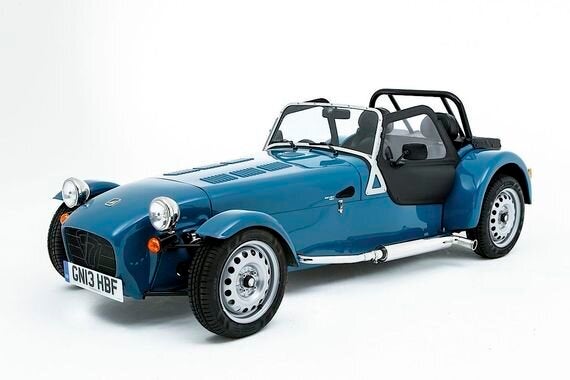In cars as in life, absolute power corrupts. Today's performance machines offer ever more of it, with output figures that would have any nineteen seventies schoolboy drooling - the latest BMW M5 pushes out a crushing 560BHP for example, the province of highly tuned Ferraris even just a few years ago. But all this motive force comes at a price - nothing ever is for free. The more punchy the engine, the more portly the chassis has to be. The latest M5 weighs in at 1,945kg, when the first one was just 1,550...
Modern cars are full of technology, electric motors, and active and passive safety equipment, all of which add weight. Even the miles of wiring they need to work all of this piles on the pounds. Then there's the extra strengthening necessary for the chassis of these mighty performance cars, the bigger wheels and the beefier brakes - everything adds mass.
With all this extra girth, power gains are blunted or even nullified. Eighties petrolheads would coo over the Ford Sierra Cosworth, yet this put out a mere 225BHP - the province of modern people carriers and pick-up trucks. Instead, it got its speed from its lightness, tipping the scales at a mere 1,275kg. The message is clear - the slimmer the car, the speedier it is.
That's why the new Caterham Seven 160 is so swift, despite putting out a meagre 80BHP from its three-cylinder turbocharged engine. It's the very antithesis of today's corpulent, bloated Euroboxes, weighing in at a mere 490kg. "We have always remained steadfastly true to Chapman's original philosophy of building a car that is fit for purpose and then 'adding lightness'. We build cars that are lighter, so that they go faster, to take you further", says Caterham's David Ridley.
As every Prisoner fan knows, it is the son and heir of the very Lotus that Patrick McGoohan gamely tooled around London in those dazzling opening credits to the classic nineteen sixties show. The Seven was ex-RAF pilot and racing driver Colin Chapman's first sportscar, built in 1957 to satisfy his sporting ambitions. Since 1972, Caterham has curated the car brilliantly, and it's now very finely fettled, with a wide range of engines and chassis options available. The Seven 160 you see here is the most affordable at £17,995 (or £3,000 less if you build it yourself), although you'll have to pay more for luxuries like weather protection or a heater!
The Seven 160 can sprint as fast as any VW Golf GTi ever could, but simple nought-to-sixty times miss the point; its beauty is its drivability. It is wonderfully accomplished at changing direction at speed; driving becomes a visceral experience, the sort of thing you'd only otherwise get from a performance motorbike. You become part of the machine, and it's that intense sense of connectedness that makes the Seven such a pleasure. Everything is so tactile and immediate; there's nothing else quite like it.
"Buying a Caterham is", confides Ridley, "an emotionally-driven process by someone who feels a strong affinity with the Seven model itself, and who is interested in the integrity of his sportscar". Fascinatingly, this isn't compromised by the 160 being a stripped-down, 'poverty-spec' machine - indeed many fans reckon it to be the best ever Seven derivative. The low weight of the tiny engine improves the handling still further; less weight in front of the driver gives the car an almost psychic ability to know where to go. And those old-school, narrow Avon tyres and steel wheels grip far beyond expectations, whilst providing faster turn-in and a more touchy-feely relationship with the road.
Best of all, the general lack of complexity makes the car so much more accessible than your average tuned-up tin can. It becomes an extension of your central nervous system, so there's no need for weight-gaining parking sensors, sunroofs, air conditioning systems and so on - all of which are necessary to make its conventional rivals more useable. Just hop in and go! Oh, and the 360-degree field of vision and several million miles of headroom don't hurt, either.
The 160 is also a great all-round ownership proposition. Calculator owners will love that its tiny engine is as parsimonious with petrol as a Prius, and Caterhams simply don't depreciate. David Ridley adds, "there's almost none throughout their lives, so they are the perfect vehicle to sell on at any point. However, we find that once a customer has bought a Seven, the majority of them will keep coming back". Here's a new car that hasn't had the character and flare designed out of it, one that proves less can actually be more.
